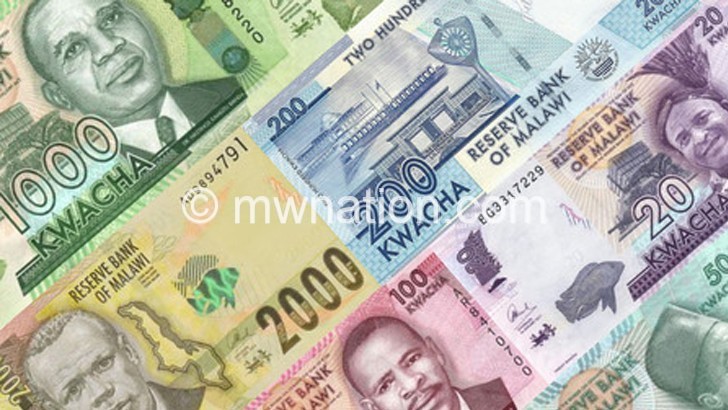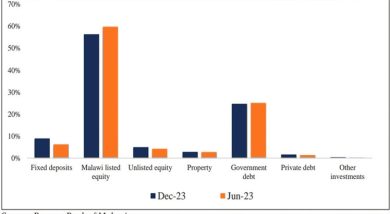Kwacha re-aligns against major currencies
The Malawi kwacha depreciated against the currencies of the country’s major trading partners in May 2022 on account of a 25 percent official adjustment to align the currency with macroeconomic fundamentals, Reserve Bank of Malawi (RBM) has said.
In its recent monthly economic report, RBM observes that following the depreciation of the local unit on May 27 2022, the US dollar continued to gain strength following increased investor confidence in the US dollar, which was considered a safe-haven currency amid rising uncertainty due to the Russian-Ukraine war.

Reads the report in part: “The kwacha depreciated by 25 percent and traded at K1 029.90 per US dollar as at end-May 2022. Against the British pound and the euro, the local currency depreciated by 20 percent and 22.2 percent and traded at K1 380.71 per pound and K1 180.96 per euro, in the review month, respectively.
“The weakening of the kwacha against these currencies largely followed the local currency realignment. Nonetheless, the British pound and the euro lost strength on the global market as a result of increased energy and food prices fueled by the Russia – Ukraine conflict.”
RBM data shows that against Asian currencies, the kwacha depreciated by 27.6 percent and 23.2 percent against the Japanese yen and the Indian rupee, and traded at K7.99 per yen and K13.15 per rupee, respectively.
“The kwacha’s loss of strength against these currencies was on account of the exchange rate realignment. Additionally, the yen was boosted by improved investor confidence as a safe haven currency,” said RBM in the report.
Against the Chinese yuan, the kwacha depreciated by 24.4 percent and traded at K153.56 per yuan.
Meanwhile, gross official reserves increased to $388.2 million (1.6 months of imports) from $363.3 million (1.45 months of imports) recorded in the previous month during the month under review.
However, following the devaluation, market analysts feel there has not been an improvement in foreign exchange liquidity challenges and the exchange rate.
Financial Market Dealers Association of Malawi president Maclewen Sikwese told Business News recently that on ensuring alignment between the Authorised Dealer Banks [ADBs] telegraph transfer [TT] rates and cash bureau rates to create a unified market clearing exchange rate, a quick look at the ruling bureau cash rates and the ADBs TT rates does point to widening spread between the two market rates after a brief period of alignment.
He said: “Despite a more accelerated pace in the widening of the spread, the general direction was expected as the two markets differ in both depth and the variables that affect the pricing of the foreign exchange.”
Sikwese said unlocking flows from hoarders, the market has seen an increase in inflows with the average of $6.3 million (about K6.4 billion) traded per day post devaluation from $4.8 million (K4.9 billion) in May before devaluation which he observed could be as a result of tobacco inflows.
Lately, Malawi has faced foreign exchange shortages which according to market analysts, reflects the increasing burden on RBM to support the foreign exchange market with liquidity to smoothen the rate of depreciation.






2 Comments